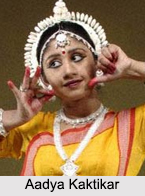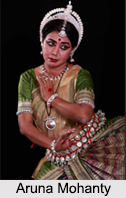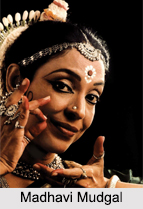 Odissi dancers are popular for their breathtaking performances all across the globe. Like all other Indian classical dances, Odissi dance also has its origin in the ritual dances that were performed in the temple premises of Odisha. The rhythm, bhangis and mudras of the Odissi dancers have a distinct style of their own. The Odissi dancers mainly perform on the theme of infinite love of Lord Krishna and Radha.
Odissi dancers are popular for their breathtaking performances all across the globe. Like all other Indian classical dances, Odissi dance also has its origin in the ritual dances that were performed in the temple premises of Odisha. The rhythm, bhangis and mudras of the Odissi dancers have a distinct style of their own. The Odissi dancers mainly perform on the theme of infinite love of Lord Krishna and Radha.
The Odissi dancers are well acquainted with the art related with this dance and music. It is more popularly known as the Panchama Veda and has been cultivated with success from an ancient period in Odisha. It was King Mahameghavahan Kharvela, an expert in the art of Odissi dance and music, who provided a strong base for further development of this art through his royal patronage. According to the Hathigumpha inscription, the Odissi dancers entertained the people of King Kharvela during dance and musical performances. This noble tradition of performance started by Kharvela came to be followed by the latter rulers of Odisha, and this led to the further progression of the Odissi dancers under the patronage of the Bhaumakara and Somavansi monarchs.
Some of the famous Odissi dancers are as follows:
 Aadya Kaktikar: Aadya Kaktikar, a follower of Madhumita Raut is rising as the new face of this antique dance custom is an accomplished Odissi Dancer who has undergone two decades of thorough training under the table sponsorship of Guru Mayadhar Raut and Madhumita Raut at "The Mayadhar Raut School of Odissi Dance" at New Delhi. She has performed extensively as a solo artist since 1992, in a number of festivals and has played a leading role in all of Guruji"s compositions for the last decade.
Aadya Kaktikar: Aadya Kaktikar, a follower of Madhumita Raut is rising as the new face of this antique dance custom is an accomplished Odissi Dancer who has undergone two decades of thorough training under the table sponsorship of Guru Mayadhar Raut and Madhumita Raut at "The Mayadhar Raut School of Odissi Dance" at New Delhi. She has performed extensively as a solo artist since 1992, in a number of festivals and has played a leading role in all of Guruji"s compositions for the last decade.
Shreelina Ghosh: Shreelina Ghosh is a great Odissi dancer and also the author of the creative composition "Panamami Buddham". Reela Hota is the former disciple of legendary Odissi dancer Padma Vibhushan Kelucharan Mohapatra.
Lingaraj Pradhan: Lingaraj Pradhan, an aspiring Odissi dancer, is also serving as the faculty of "Rudrakshya Foundation".
Aditi Bandyopadhyay: Aditi Bandyopadhyay is a dancer, performer, choreographer and teacher of Odissi dance. She trained under the guidance of late Padma Vibhushan Guru Kelucharan Mahapatra, Guru Giridhari Nayak, Smt Amala Shankar, and more presently under Guru Smt Sutapa Talukdar. Aditi has presented 176 solo dance recitals in India and in different parts of the world, and has choreographed a number of dance productions of her own.
Her own productions, Teen Katha and Sri Krishna Prem Gatha, have received huge admiration at impressive music conferences. She is the creative director of Nrityaneer, a dance organization she founded, and has presented a number of dance recitals in India with her dance troupe.
Anita Babu: She started learning Odissi at the age of 7 in her school before she became a student of Guru Gangadhar Pradhan and has remained ever since. In a society where girls learning dance after a certain age was looked down upon, she got the abundant support of her family to carry on with her dance but without ignoring normal education. In spite of a lot of time being dedicated to Odissi, she still completed her Master in Arts degree in Anthropology from Utkal University. Anita is been learning this dance form at the Orissa Dance Academy, Bhubaneswar, an organization set-up by Guru Gangadhar Pradhan. Superior dancers of ODA like Nandita Pattnaik, Aruna Mohanty and Bichitrananda Swain have also played an imperative role in laying the foundations of Anita early in her life.
 Aruna Mohanty: Aruna Mohanty is an older disciple of Guru Gangadhar Pradhan and an established dancer of Odisha. She has also received training from Guru Kelucharan Mohapatra. She first made a mark in the early on 1980s and gained fame for her duet performances with Nandita Patnaik, another leading disciple of her guru. A talented soloist, she has a fine clutch of dance method and maturity in abhinaya.
Aruna Mohanty: Aruna Mohanty is an older disciple of Guru Gangadhar Pradhan and an established dancer of Odisha. She has also received training from Guru Kelucharan Mohapatra. She first made a mark in the early on 1980s and gained fame for her duet performances with Nandita Patnaik, another leading disciple of her guru. A talented soloist, she has a fine clutch of dance method and maturity in abhinaya.
Arpita Venkatesh: Arpita Venkatesh is a young talented proponent of the age old dance form Odissi. Her talents revived under the guidance of renowned Odissi exponent Smt. Aloka Kanungo in Shinjan Nrityalaya. Original guidance was provided to her by the expert Guru Shri Muralidhar Majhi. She has also taken active part in important productions of her Guru Smt. Aloka Kanungo such as Shakti, Sthapatya Satya, Gatagata etc. she is now also assisting Guru Smt. Aloka Kanungo. Her close dealings with the expert guru of Manipuri Smt. Kalavati Devi in Maharaas, has further ameliorated her as a dancer.
Leena Mohanty: She is a leading proponent of Odissi dance. She has won many awards, such as the Ustad Bismillah Khan Youth award, the Mahari award, the Sanjukta Panigrahi award and performed in many shows all over the world. She has choreographed dance pieces and items and has taught students throughout the world. Her main bases and centres of learning are in Bhubaneshwar, Odisha, India, Kuala Lumpur, Malaysia, and New York City, though she has performed in many other places.
Bijayini Satpathy: Her initial Odissi training was at the Orissa Dance Academy, until she moved to Nrityagram. She has lived and worked here ever since. For over two decades, Bijayini has worked with Surupa Sen to explore and make bigger the dance expressions of Odissi dance and jointly they have developed a style that distinguishes the dancers of the Nrityagram School.
Madhavi Mudgal: She is an Indian classical dancer known for her Odissi dance style. She has won several awards, as well as the Sanskriti Award, President of India`s award of Padma Shri, the Odisha State Sangeet Natak Akademi Award, Grande Medaille de la Ville by Govt. of France, Central Sangeet Natak Akademi Award, Delhi State Parishad Samman and the title of Nritya Choodamani.
Vani Madhav: Vani Madhave is an Odissi dancer, born and brought up in Odisha, with over 25 years of knowledge in dancing coupled with 15 years of teaching experience. Vani Madhav, disciple of late Guru Deba Prasad ancestry through Guru Gajendra Panda and Guru Sudhakar Sahu, is one among the very few young Odissi dancers of India, who earned the cynosure of the media and critics as extra ordinarily brilliant during the last decade and a half. She made her debut at the age of six under the guidance of Guru Gajendra Panda. Currently Vani Madhav is settled down in, Bengaluru.



















